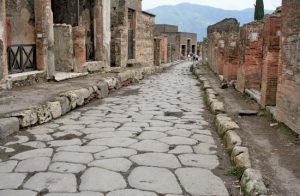Effective oppression often starts with the demoralization of the soon-to-be oppressed, and one of the most effective ways to accomplish this is to destroy archaeological sites. These sites often have meaning for the people who live near them, and their destruction has a significant impact on these people. For this reason, groups like the Taliban and ISIS (in recent years) have destroyed these kinds of sites to establish their control of the people in these areas.
One such site was the Arch of Triumph, an entrance to the ancient Syrian city of Palmyra. ISIS destroyed this ancient site in late 2015, adding to a long list of many other archaeological sites they have destroyed. They also destroyed two temples at Palmyra months before the arch: the Temple of Baalshamin and a temple dedicated to Bel. The head of Syria’s Antiquities Department, Maamoun Abdulkarim, feels that this wanton destruction goes beyond the usual religious fervor associated with ISIS, as the Arch of Triumph is not necessarily of any religious importance. Regardless, it is still clear that ISIS is destroying these sites in order to establish their own dominance and demoralize the Syrian people. However, archaeological sites aren’t always destroyed to actively oppress people: they can fall victim to looters seeking wealth and to an utter lack of care for their importance.

Camel corps desert patrol – Palmyra, 1938
Ever since the start of the Iraq War in 2003, the site of the ancient city of Babylon has faced some serious damage. Looters have stolen cuneiform tablets and statues, selling them in illegal markets and on Ebay. Irrevocable damage was also done to the site by the United States military when it established Camp Alpha on the ruins from 2003 to 2004. Bulldozers and helicopters damaged buildings and artifacts around the site, and the US has taken no accountability for its actions. Even though Babylon has been suggested as a potential UNESCO World Heritage Site, archaeologists and the Iraqi State Board of Heritage and Antiquities are angry that more hasn’t been done to address these issues.

Visible destruction from looters at the Babylon site.
While archaeological sites are destroyed for a number of reasons, their destruction has similar effects. These sites are important symbols to the people who live near them, and their destruction can be viewed as a personal attack on those people and their cultural identity. With more than 7 billion people living on the planet today, visitors to archaeological sites outnumber the actual people who built those sites. The shear number of people guarantees inevitable damage, whether it come from groups like ISIS, looters, the US military, or any number of other potential threats. Regardless, if any of these sites are to survive, action must be taken to protect them.
Links to sources:
http://news.nationalgeographic.com/2015/10/151005-palmyra-arch-destruction-isis-syria-archaeology/
http://www.huffingtonpost.com/diane-tucker/brutal-destruction-of-ira_b_290667.html
Images:
http://news.nationalgeographic.com/content/dam/news/2015/10/5/palmyraarch/02palmyraarch.ngsversion.1444076333768.adapt.885.1.jpg
http://www.ancientlosttreasures.com/_Images/_2009/_09/20090927_0002a.jpg
Related information:
Looting in South America of Mayan and Moche Artifacts and Sites
Destruction of Cultural Heritage – The Gobal Policy Forum


